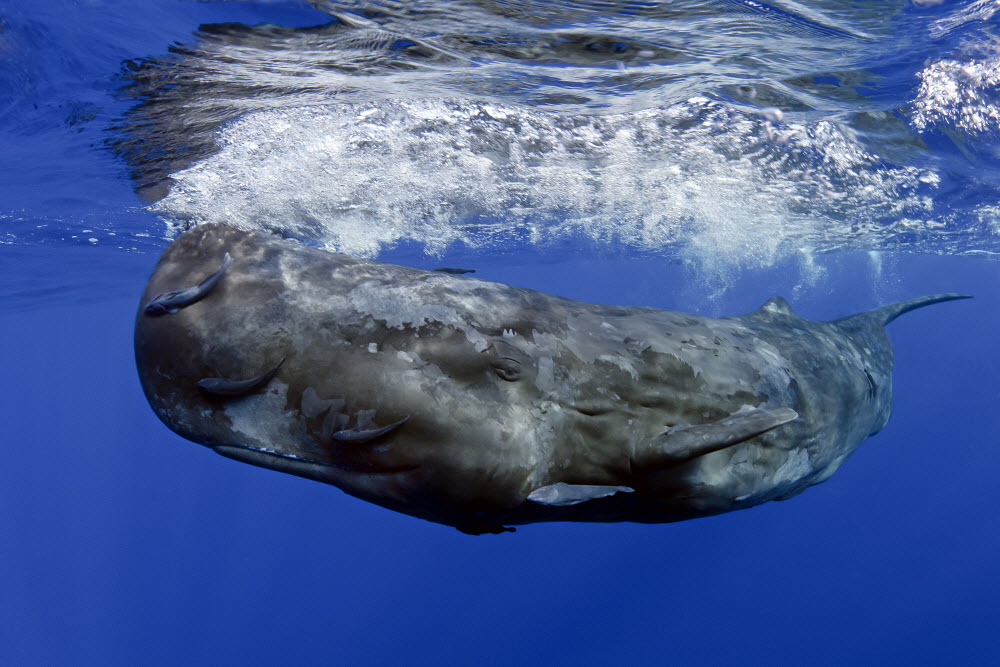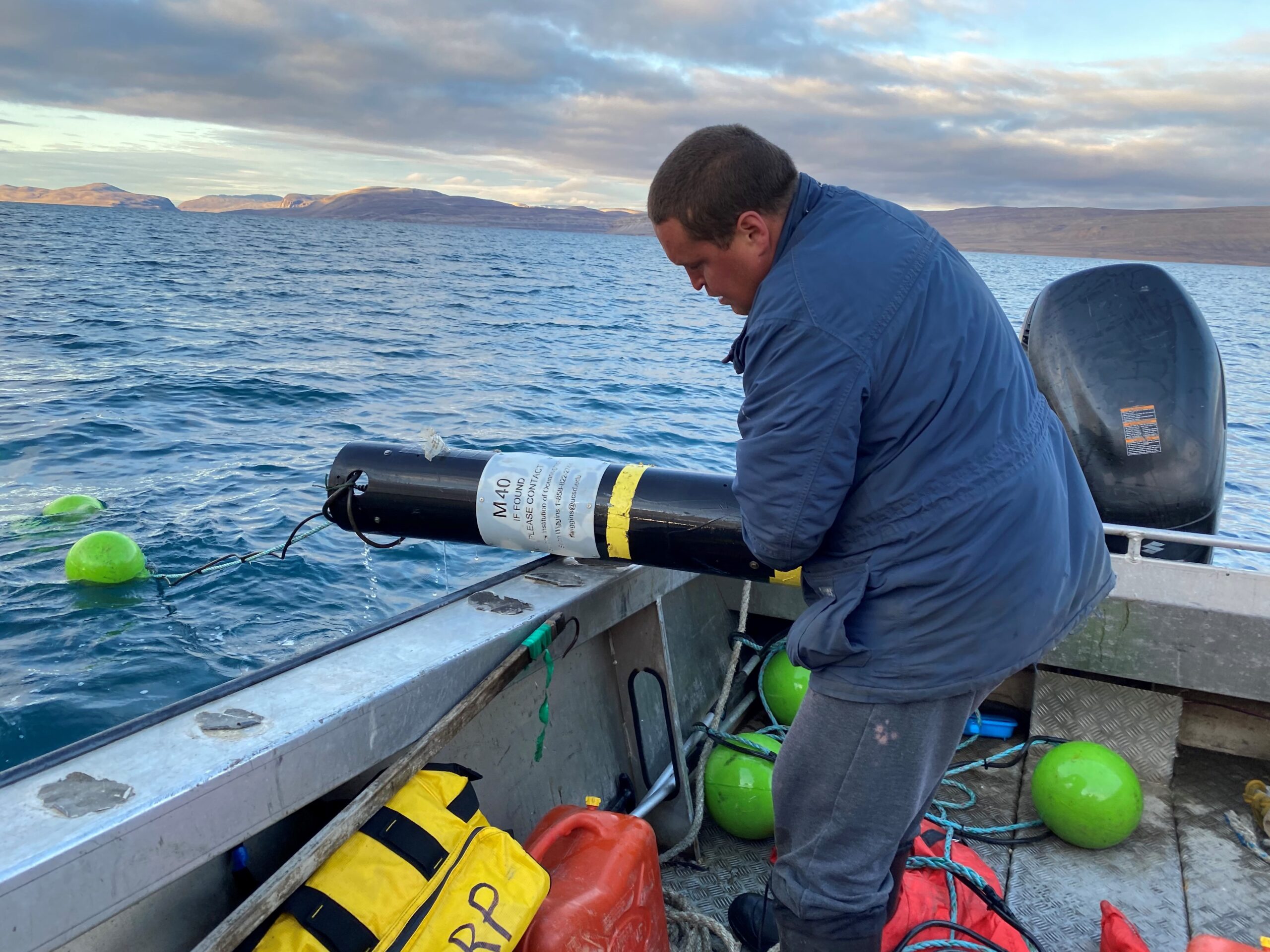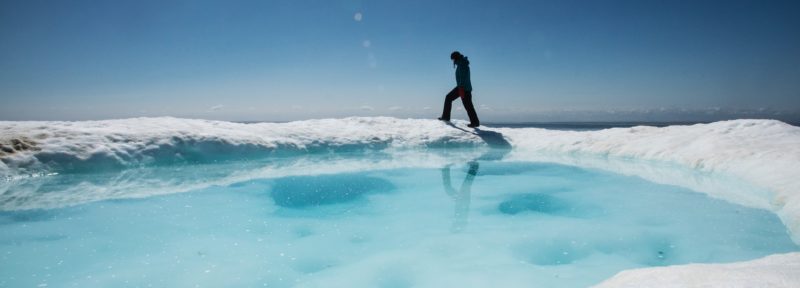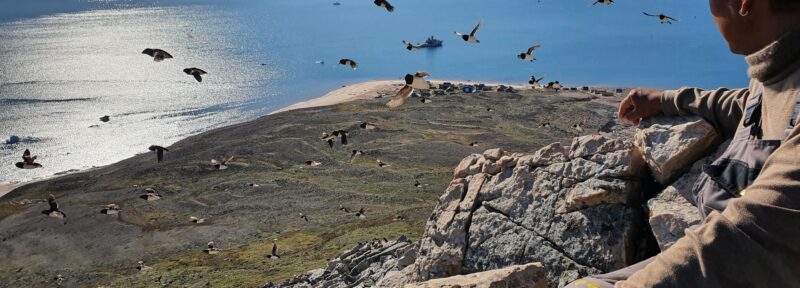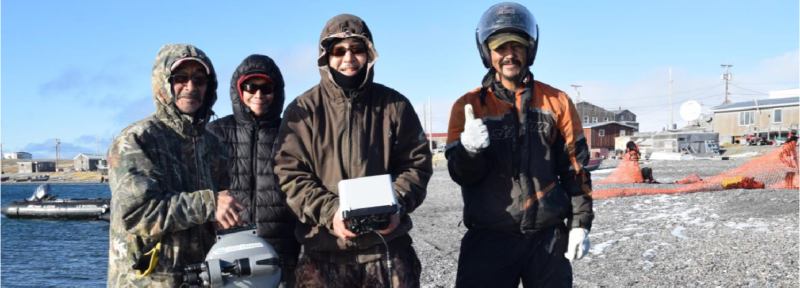Why Are Sperm Whales Moving North?
Credit: Credit: Peter Allinson, MD / Marine Photobank via Wildscreen Exchange
Now, a new article co-authored by Dr. Kristin Westdal, Oceans North’s Arctic Field Science Director, and Alex Ootoowak, Oceans North’s Field Technician, has shed light on how many sperm whales are travelling north—and whether they might be here to stay.
Sperm whales are the largest of all toothed whales (a category that includes killer whales and belugas), with males reaching around 16 metres in length. Their massive size, large square heads, and habit of lying motionless on the surface of the water make them relatively easy to spot. However, while sperm whales are found around the world and are known to travel great distances, they had rarely been seen this far north. No Inuit hunters Josh spoke to from the community could remember seeing one.
But seeing sperm whales isn’t the only way to track them: like other toothed whales, sperm whales rely heavily on sound to navigate their environment, to communicate with one another, and to hunt. If you listened carefully and for a long time, you might be able to tell when the sperm whales arrived and how long they stayed for. Luckily, the researchers had the perfect data set.
In 2014, Oceans North deployed its first hydrophone in Milne Inlet to record the migration of narwhals through the region. The Mary River iron ore mine was about to open nearby, and residents of Pond Inlet were concerned about the impacts of increased shipping. The Scripps Institution of Oceanography joined the study two years later, adding additional hydrophones and research capacity to the project. Over the last eight years, researchers have recorded a detailed “soundscape” of the marine environment near Pond Inlet—everything from the crackle of sea ice to the whistles of narwhal to the increasing roar of engines from ships coming to and from the mine. The research is helping to document how ships are making the waters of north Baffin Island noisier, how the Arctic Ocean is changing, and what these changes may mean for Arctic wildlife and the communities that rely on these animals.
Alex Ootoowak retrieves hydrophone from Milne Inlet location in August 2020.
Credit: Julie Killiktee
While the data hadn’t initially shown evidence of sperm whales, neither had anyone thought to look for them. The hydrophones record 24 hours a day: that’s far too much sound for someone to sift through on their headphones. Instead, researchers employ machine learning and software programs to identify relevant patterns in the acoustic data. In these cases, it can be difficult to find something you’re not looking for.
PhD candidate Natalie Posdaljian and her co-authors took a closer look at the Arctic soundscape to see what might have been overlooked. A student in the Scripps Acoustics Ecology Lab and the study’s lead author, Posdaljian has been fascinated by sperm whales ever since she first encountered them while working as a fisheries observer in the Gulf of Alaska. As she examined the data more closely, looking for the unique frequencies of sperm whales, Posdaljian saw why it had been so easy to miss them at first: in 2015 and 2016, when the project had started, the sperm whales only showed up for two or three days. By 2019, however, sperm whales were active around Pond Inlet for at least 17 days.
What does this mean for the Arctic? Sperm whales avoid sea ice, and Posdaljian found that the presence of sperm whales was connected to the increased number of ice-free days in the late summer and early fall. As the Arctic continues to warm, it’s likely that sperm whales will continue to push their range further north, similar to the northward expansion of killer whales. Unlike killer whales, however, sperm whales don’t eat other marine mammals, which is good news for narwhal and beluga. The preferred prey of this group is the armhook squid, a medium-sized squid found in the Arctic’s depths. At first, Posdaljian thought that perhaps the squid were moving further north, and sperm whales were following along. But it seems more likely that they are simply taking advantage of the lack of sea ice to exploit new feeding grounds.
The researchers were also able to determine the gender of the sperm whales that made their way to the Arctic. By looking at the characteristics of the clicks that the whales made, they confirmed that only male sperm whales are making the perilous journey to the edge of the sea ice. Sperm whale females, who care for the young and live in larger social groups, tend to be less adventurous than the large males, who are often solitary or live in small “bachelor groups.”
While sperm whales don’t seem to be competing with narwhal, their increased presence in the Arctic more generally could cause competition with another mammal: humans. Greenland halibut are the basis of a major fishery in the Baffin Bay-Davis Strait region—and a favourite snack for sperm whales when found on a fishing line. As a fisheries observer in the Gulf of Alaska, Posdaljian would have to hide her excitement whenever a sperm whale showed up because the fishermen hated them. She says the whales have an uncanny knack for taking the tastiest, highest-value fish and leaving the bad ones.
Keeping an eye (or rather an ear) on the waters of the Canadian Arctic will be important in the coming years. Sperm whales are top predators, so it’s worth paying attention to significant changes in their behaviour: it could indicate that important things are happening further down the food chain. It’s possible that sperm whales will continue to push further north and stay for longer periods of time. If that happens, it might be good news for sperm whales—Posdaljian says they’re among the “winners” of global warming—but the reasons for their northward migration and their potential impacts on the ecosystem are not fully understood.
If you’d like to know more, the full open-access article on the research is available here.
Alex Tesar is a communications specialist at Oceans North.

